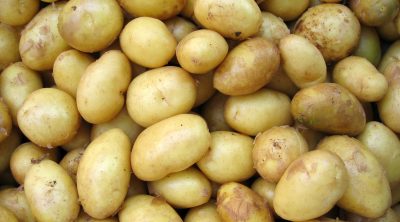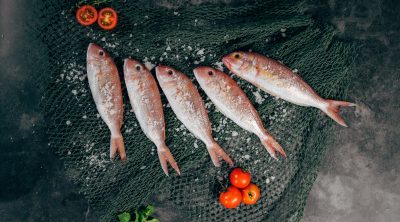Contents
What Is Pandan?
Pandan is a type of tropical plant that has tall, narrow blades of leaves.
It is more commonly known as the screwpine leaf in English speaking countries. It is also known as daun pandan in Malaysia and Indonesia, and pandan leaf in other Southeast Asian countries. The leaves are used to enhance the flavor of a dish or to add color.

Where Does Pandan Grow?
The plant is grown in South and Southeastern Asia. While it can be found growing wild, it is more typically a farmed crop. This variety is sterile, meaning that flowering is very rare.
While the flower is edible, it requires processing. If the flowers are eaten raw, they can cause diarrhea and blistering on the tongue. Pandan grows like a weed in that part of the world, so farmers are happy that it is becoming more popular.
What Does Pandan Taste Like?
The fresh leaves need to be boiled or bruised to release their fragrant aroma. Pandan has a very sweet flavor with an aroma of floral grass. It complements sweet dishes better than savory ones.
Pandan is often referred to as the vanilla of Asia. Dried leaves don’t have any flavor to them.
Nutrition
Health Benefits of Pandan
Traditionally the health benefits of pandan leaves are as a fever reducer and to aid in digestion. An extract of the leaves in some cases has been shown to help in lowering blood pressure, to relieve some pain associated with arthritis, and to increase appetite.
Other uses of pandan leaves can be to help with dandruff and hair problems. In these cases, the leaves are used as a type of conditioner on your hair as opposed to being ingested.
Is it Safe to Eat Pandan?
Pandan leaves are safe to eat. They can be a little fibrous though, so they are not enjoyable as a snack without some serious preparation. The only caution with this is that it should be used sparingly as a flavoring agent. The cooked leaves can be extremely potent and make the dish overly sweet.
Nutritional Value of Pandan
The nutritional value of pandan leaves is so low as to be almost nonexistent. The amount of calories per serving size is roughly twenty-four per one hundred grams.
The leaves don’t contain any major vitamins or minerals. The main benefit of using pandan leaves are for flavoring purposes with a few added health benefits. It’s not really part of a well balanced diet but it will fill you up without adding to your waistline.
Can Pandan Leaves Reduce Cholesterol?
There isn’t any scientific evidence to prove that pandan leaves can reduce cholesterol. However, some people think that it has helped them. This may be more of a case in which watching what you eat and making better food choices as the real cause.
Cooking
How Do You Prepare Pandan?
In order to utilize pandan for cooking purposes, determine what dish you are serving. For most applications, pandan is either left whole or cut into pieces that are still big enough to remove before eating.

Fresh leaves are crushed and boiled to release their flavor. Since the texture of the leaves is not the best, if it is remaining in the dish it will need to be ground to minimize the impact.
How to Eat Pandan
Pandan can be made into a tea. Tie several pandan leaves together and steep them in boiling water. Add your favorite flavor of tea to this mix and remove the leaves after ten minutes.
It is not recommended that pandan leaves be used as a tea by themselves. The flavor can be a little overwhelming on its own.
There are several types of rice dishes that work well with the addition of pandan leaves. These include coconut rice, jasmine rice, and basmati rice. The more traditional uses of the leaves are as a wrapper for meat.
The leaves will impart some of their flavoring into the meat as it is cooked. The leaves are then removed from the meat prior to eating. It can also be used as a decorative wrapper for serving purposes.
Bunches of the leaves can be used to flavor soups and stews while they are cooking. The leaves are removed after the cooking process. The leaves are commonly used for curries. Chopped pandan leaves can be used sparingly in puddings and drinks to add flavor and aroma.
Cultivation
Where Does Pandan Grow?
Pandan grows well in moist soil with full sun. The plants can tolerate some afternoon shade. The plant produces suckers that aid in it’s spreading from one area to the next. It can also be planted with seeds. The seeds need to be soaked for a day prior to planting and it will take two or three months before it will sprout.
The plant does well growing in containers. Pandan is generally found in parts of Asia, however it can grow anywhere with the proper conditions.
What Does It Take to Produce Pandan?
The plants can be harvested six months after they are planted. This harvesting involves cutting back some of the leaves. Three to four of the center leaves are left so that the plant can be harvested again at a later date. The plant will continue to sprout new leaves as long as the older part of the plant is left untouched.
Is Pandan Environmentally Friendly?
Pandan harvesting can be environmentally friendly because it is a sustainable resource. It can be harvested multiple times without killing the plant. It can also be used as a natural source for food coloring. It is a healthier alternative to chemicals in the foods that we eat.
Do Orangutans Suffer When Pandan is Grown?
Whenever habitat is converted to farmland, the animal population suffers. If pandan cultivation were to spread and remove the forests that orangutans occupy, then the species would suffer. Since pandan plants can also be grown in pots, there are other options to expanding farming without adding to the devastation of the forests.






